
In the keto diet world, there are two types of people: Those who are all for the high-fat lifestyle, and those who, well, aren’t.
Jenna Jameson, for example, is clearly a proponent—as is Mama June, Halle Berry, and Savannah Guthrie. Jenna, for example, credits the keto diet with her more than 80-pound postpartum weight loss, while Halle swears that it helps her maintain her health (she has type 2 diabetes).
But, like any super-polarizing trend, the keto diet isn’t universally loved: Tamra Judge, who was on the keto diet for about a month, recently quit, saying it “doesn’t do anything,” and noting that it made her feel sick (#ketofluproblems).
Amidst all the positive and negative reviews, though, you may still be a little hazy on the details of the keto diet—like what it is, how it works, and exactly how much butter and cheese you get to eat. Don’t worry, I got you.
All right, what exactly is the keto diet?
Short for “ketogenic diet,” this eating plan is all about minimizing your carbs and upping your fats to get your body to use fat as a form of energy, says Scott Keatley, R.D., of Keatley Medical Nutrition Therapy.
While everyone’s body and needs are slightly different, that typically translates to:
That usually means eating no more than 50 grams of carbs a day (some strict keto dieters even opt for just 20 grams a day).
After about two to seven days of following the keto diet, you go into something called ketosis, or the state your body enters when it doesn’t have enough carbs for your cells to use for energy. That’s when you start making ketones, or organic compounds that your bod then uses in place of those missing carbs. At this point, your body also starts burning fat for more energy, says Beth Warren, R.D., founder of Beth Warren Nutrition and author of Living A Real Life With Real Food.
Why did the keto diet become so trendy for weight loss?
Believe it or not, the keto diet was originally designed to help people who suffer from seizure disorders—not to help people lose weight, says New York-based R.D. Jessica Cording. That’s because both ketones and another chemical produced by the diet, called decanoic acid, may help minimize seizures.
But people who started following the keto diet noticed weight loss for a few reasons: When you eat carbs, your body retains fluid in order to store carbs for energy (you know, in case it needs it). But when you’re not having much in the carb department, you lose this water weight, says Warren. Also, it’s easy to go overboard on carbohydrates—but if you’re loading up on fat, it may help curb cravings since it keeps you satisfied.

That, plus the fact that ketosis encourages your body to burn fat, means you can end up with pretty dramatic weight loss.
“The keto diet took off because its ‘rules’ make sense to most people,” Keatley says. “Almost all of us want to lose some fat from somewhere on our body, and this diet focuses on fat as fuel.”
Celebs who’ve done the keto diet didn’t exactly hurt its rep, either.
Watch Vanessa Hudgens try a bunch of packaged keto snacks:
So, will the keto diet actually help with weight loss?
Probably, and there are a few reasons why the keto diet usually equals weight-loss gold, says Keatley. For starters, people usually reduce their daily caloric intake to about 1,500 calories a day because healthy fats and lean proteins make you feel fuller sooner—and for a longer period of time. And then there’s the fact that it takes more energy to process and burn fat and protein than carbs, so you’re burning slightly more calories than you did before. Over time, this can lead to weight loss.

Everyone is different, and how much you weigh when you start the diet matters, but you could safely lose around one to two pounds a week on keto, Keatley says. “It’s sometimes more, sometimes less, depending on the individual’s caloric needs,” he adds.
Worth noting: The keto diet isn’t a “miracle fat burner,” says Keatley. “The calories in fat are still calories, so working out and keeping total intake at a reasonable level is the only way it works,” he says. “Being on a keto diet but eating more calories than you need will still add fat to your frame.”
What about long-term health benefits on the keto diet? Are there any of those?
Some keto devotees swear the keto diet offers multiple health benefits—from curing acne to improving the risk factors of heart disease—but a lot of these claims are unproven, have weak science behind them, or are purely anecdotal, says Sonya Angelone, R.D., a spokeswoman for the Academy of Nutrition and Dietetics.

Here’s what we do know: The keto diet may be useful in treating symptoms of epilepsy, a seizure disorder. “The use of keto in treating epilepsy has the most evidence,” Angelone says. One study conducted by Johns Hopkins Medicine, for example, followed epileptic patients on the keto diet and found that 36 percent of them had a 50 percent reduction in seizures after three months on the diet, and 16 percent were seizure-free. However, experts aren’t entirely sure why the keto diet has this affect, she adds.
There’s also some evidence that it might help with type 2 diabetes. “An emerging body of research is finding that a keto plan may have some real benefits thanks to its ability to improve the body’s ability to use insulin and also help control appetite, which can result in easier weight loss,” says Karen Ansel, R.D.N., co-author of Healthy in a Hurry.
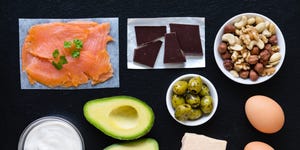
But beyond that, experts aren’t convinced that the keto diet has any other scientifically-proven health benefits. In fact, it may have some distinct downsides. If you follow the keto diet incorrectly, for example (like by eating lots of saturated fats, versus healthy unsaturated fats), you’re at risk of raising your cholesterol levels. “The best strategy to keep your heart healthy is to get as much fat as possible from unsaturated sources such as olive, avocado and canola oils, nuts, seeds, avocados, and olives,” says Ansel.
Also, keep this in mind: “This diet is not going to support good bones, a healthy brain, heart, colon, or gut microbiome,” says Angelone, and it could lead to plaque in the arteries (which could cause a heart attack or stroke) later on.
Okay, so what foods aren’t allowed on the keto diet?
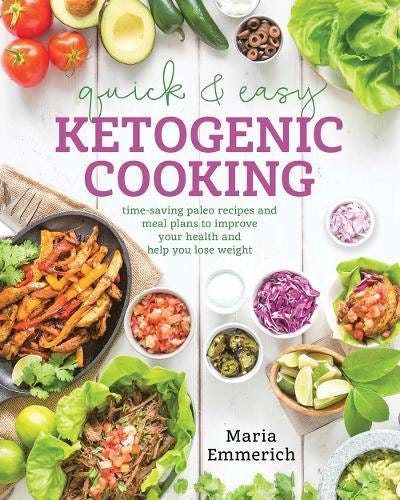
Because you’ll be focusing on fat and protein—and going easy on the carbs—big bowls of pasta (or any grain, really) definitely won’t be on your menu. It also means that starchy vegetables like potatoes and carrots, as well as legumes like chickpeas, lentils, and black beans are off-limits, too.
Another thing you can’t have: sweets—artificial or natural. Candy, cakes, and doughnuts are a no; and even many fruits aren’t allowed (apples, bananas, pears—they all have tons of sugar, which is definitely a carb).
Alcohol’s another grey area on the keto diet—many beers and sugary cocktails are banned on the keto diet, as well as some sweeter wines.
Note: Because you’ll be excluding some major food groups on the keto diet (grains, many fruits) you should definitely think about taking a multivitamin—especially one that contains folic acid, which helps your body make new cells and is often found in enriched breads, cereals, and other grain products, says Julie Upton, R.D., cofounder of nutrition website Appetite for Health.
So what can I eat on the keto diet?
Just because you’re not eating all your fave carb-y foods, that doesn’t mean you’re going to go hungry. You’ll be loading up on healthy fats (like olive oil and avocado), along with plenty of lean protein like grass-fed beef and chicken, and leafy green (or other non-starchy) veggies. (Check out this keto diet grocery list to get you started.)
More good news: Snacks are totally allowed (and I’m not just talking about carrot sticks). There are plenty of packaged options out there designed for keto fans. FATBAR is one of them. These snack bars have 200 calories, 16 grams of fat, and four grams of net carbs. They’re also plant-based and are made with almond or cashew butter, cocoa butter, coconut, pea protein, sunflower seeds, and chia seeds.
For coffee drinkers mourning the loss of their vanilla lattes, bulletproof coffee’s an option. This is your standard coffee but with grass-fed butter and medium-chain triglycerides (MCT) oil added to help give you a boost of healthy fats in the A.M.
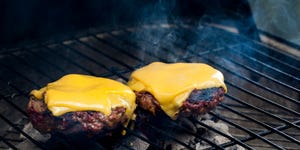
If you’re looking for something to satisfy your sweet tooth, keto fat bombs have a solid following. As the name implies, these are little snacks that are high in fat and low in carbs, so you can be on-point with your diet, even when you indulge.
And if you can’t survive without your pasta, there are plenty of products out there like Explore Cuisine’s organic black bean spaghetti that give you the pasta experience without the carbs.
Bonus: There are also tons of keto-friendly restaurants—like Red Lobster, Olive Garden, and Texas Roadhouse—that can allow you to treat yourself to a night out without coming out of ketosis.
Will I feel any side effects on the keto diet?
It usually takes three to four days for your body to go into ketosis because you have to use up your body’s stores of glucose, i.e., sugar first, Keatley says. Any major diet change can give you some, uh, issues, and Keatley says he often sees patients who complain of IBS-like symptoms and feeling wiped out at the beginning of the diet. (The tiredness happens because you have less access to carbs, which give you quick energy, he explains.)
Those issues can be part of what’s known as the “keto flu,” Warren says. Other side effects of the keto diet, all of which are tied to carb withdrawal, can include lightheadedness, nausea, mental fog, cramps, and headaches, in addition to tiredness. Luckily, the keto flu doesn’t usually last more than a week—which is coincidentally about when people start to see the number on the scale go down, says Warren.
Aside from the typical keto flu complaints, diarrhea and “keto breath” are also common keto diet side effects.
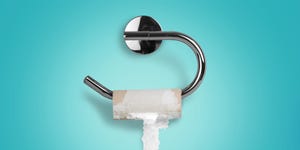
While, yes, diarrhea can be another symptom of the keto flu, it may also be linked to how your body processes fat, specifically (and, as you know, the keto diet is full of fat). The reason: Some people simply don’t digest fat as well as they should, Barbie Boules, R.D.N., previously told WomensHealthMag.com.
Keto breath, on the other hand, is less of a side-effect and more of a harmless inconvenience (your breath literally smells like nail polish remover). Basically, when your body breaks down all that extra fat on the keto diet, it produces ketones—one of which is the chemical acetone, Keatley previously told WomensHealthMag.com. (Yes, the same stuff that’s in nail polish remover.)
Your body then gets rid of those chemicals through urination, defecation, and, yes, breathing. Keto breath should go away once your body acclimates to the diet—in the meantime, pay special attention to your oral hygiene, said Keatley.
Well, should I try the keto diet?
The keto diet is not easy—or necessarily healthy—to follow over a long period of time (certain types of carbs are good for you!), say both Keatley and Warren.
If you’re interested in following keto for a short period of time, Cording says it’s important to set yourself up for success by making sure you have the right ingredients and tools to make it happen.
Okay, I want to try it. How do I get started on the keto diet?
Good news for keto beginners: Because it’s popular AF right now, there are tons of ways to get started.
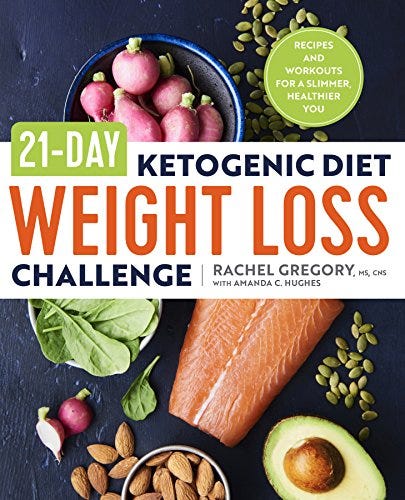
Lots of apps and websites offer keto diet challenges—basically, a blueprint for the keto diet with a fixed starting and ending point (they typically last for a week to a month, though some may be longer). Speaking of apps, plenty of keto-centric ones are right at your fingertips (a.k.a., your smartphone), like the KetoDiet app, which can help you calculate your macros and track your keto diet effectively.
If you’re looking for more of a DIY keto approach, there are recipes and cookbooks galore on the keto diet—whether you want to make keto recipes in your Instant Pot, or you’re looking for more general recipes, snack options, or keto breakfasts that make waking up easier.
Overall, if you want to go ahead and try the keto diet on for size, you do you—just remember that it’s not necessarily a diet you can or should stay on forever.
Source: Read Full Article
